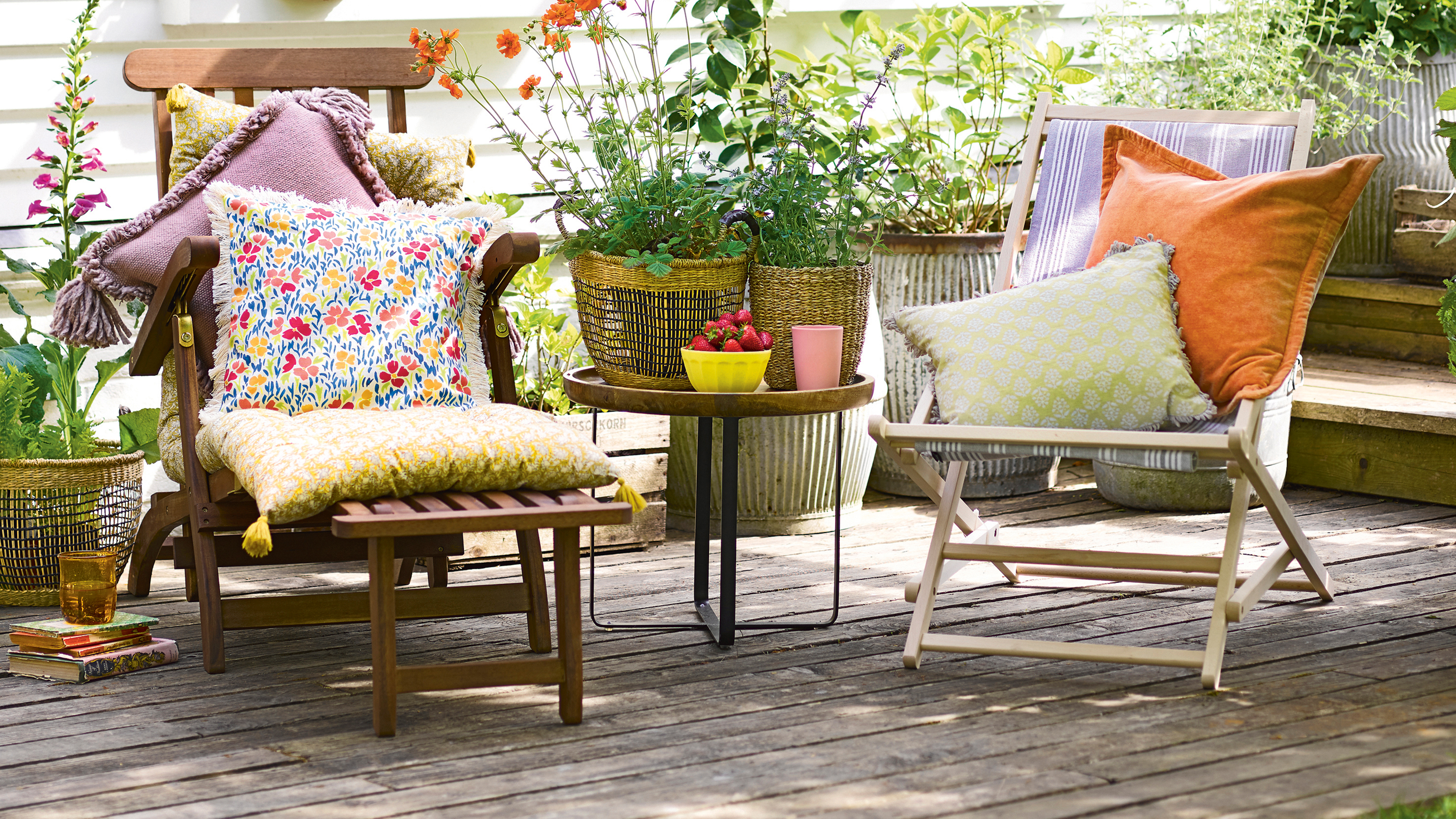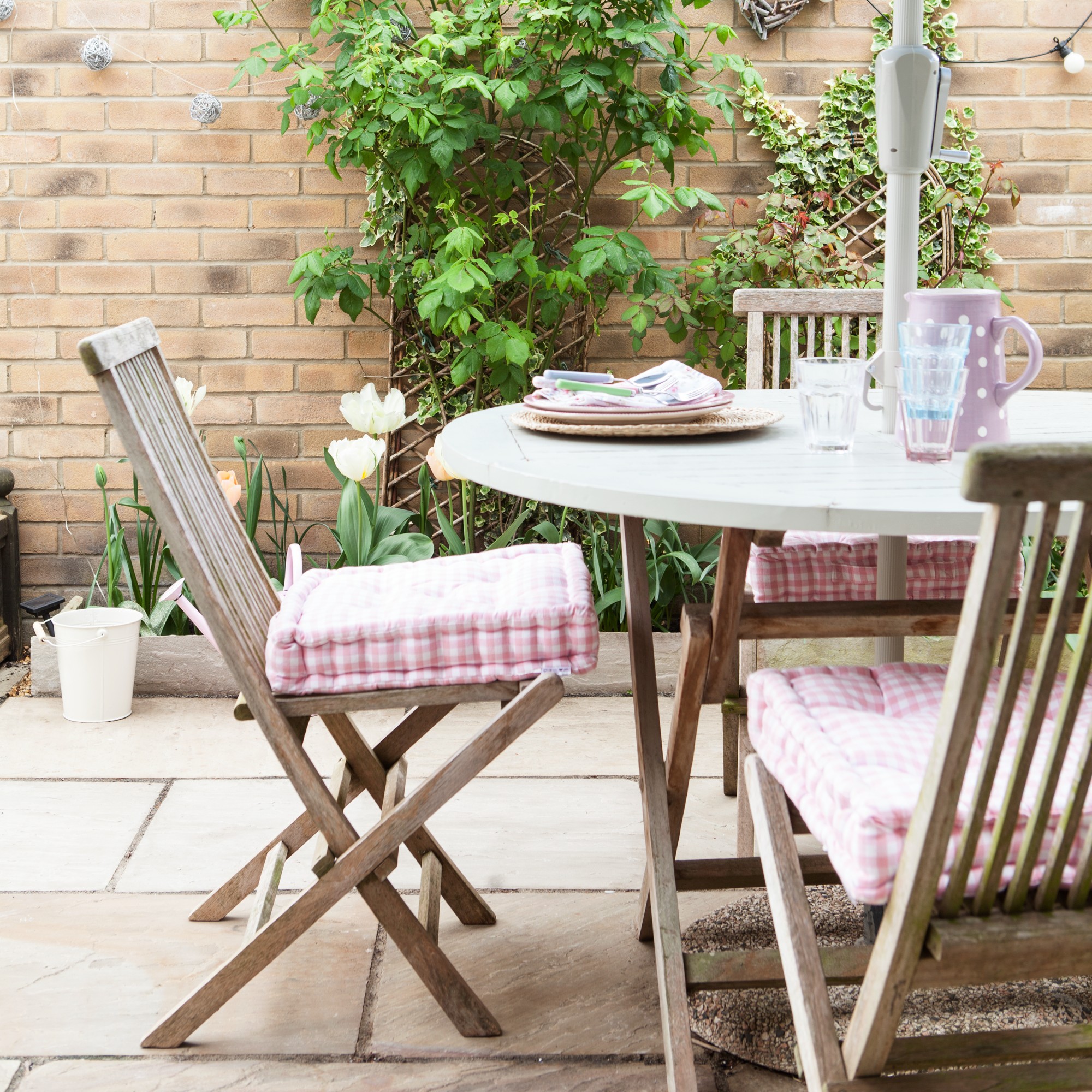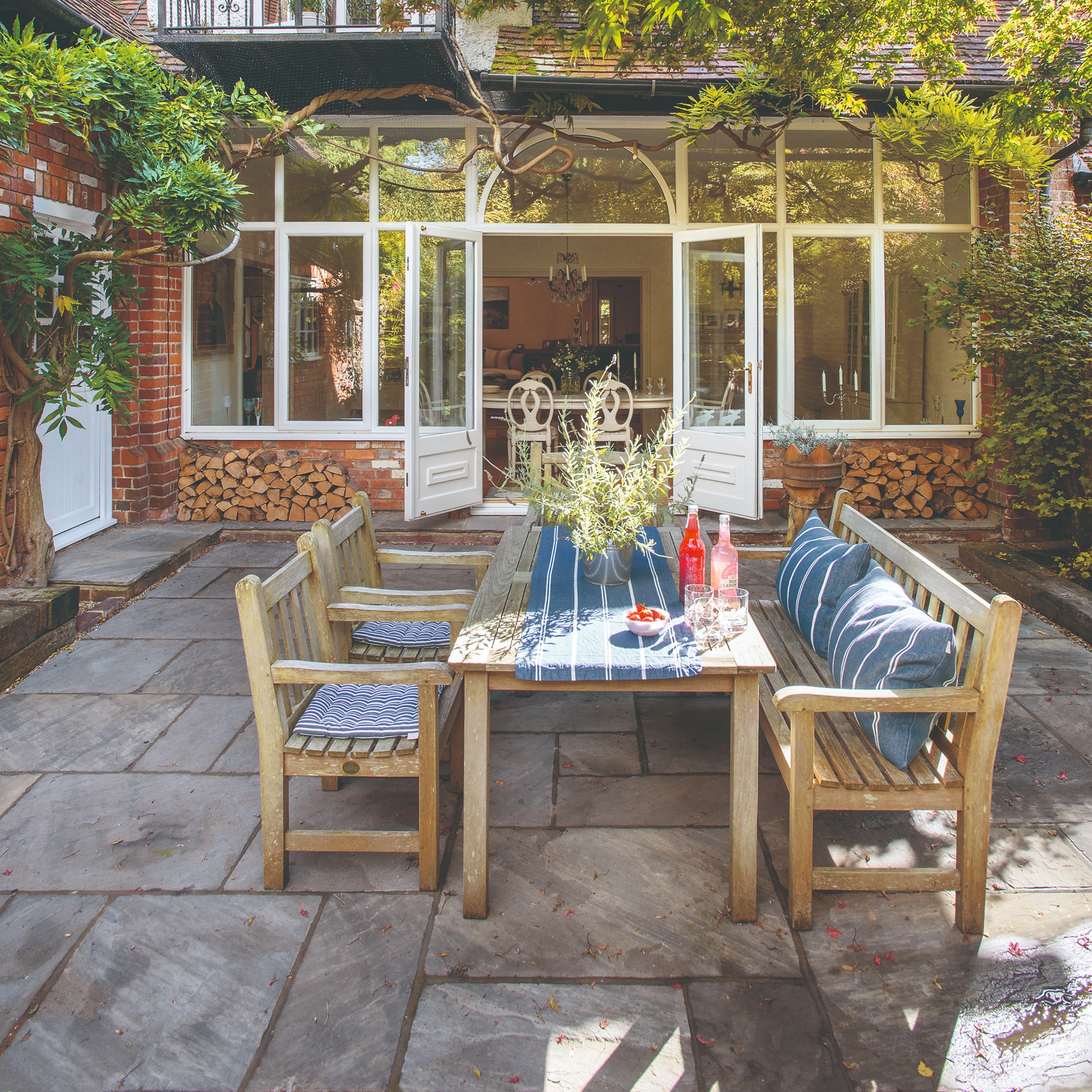How to clean wooden garden furniture in 5 easy steps ready for spring
All you need is warm, soapy water


If the rare appearance of the sun has got you dreaming of sunny spring evenings and summer al fresco dinner parties, knowing how to clean wooden garden furniture can help you get one step ahead of the game.
Yes, the best garden furniture allows you to create a natural home extension where you can eat, drink, and sunbathe. And while there are so many different materials on the market, the best wooden garden furniture is timeless. It can match any garden idea, it’s extremely durable, and it’s also very easy to clean.
But if you’re not sure how to clean wooden furniture, we’ve got everything you need to know below. From what you’ll need to a step-by-step guide and tips on how to keep your wooden garden clean for longer, this expert guide will help you refresh your garden furniture just in time for spring.
How to clean wooden garden furniture
‘General cleaning and maintenance of wooden furniture is vital in order to prevent it from getting dirty in the first place, but cleaning is also required if you notice mould or mildew on your wooden furniture,’ explains Steve Chilton, garden expert at LeisureBench. You will need to take a little more care when cleaning mould off wooden furniture, but if you're just looking to spruce up your wooden garden furniture, here is everything you need to know about general cleaning.
What you’ll need
- Soft-bristled brush
- Microfibre cloth
- Washing up liquid
- Water
Step-by-step
1. Prepare the furniture for cleaning
If wooden furniture won in the wooden vs metal garden furniture debate, it’s always a good idea to prepare the furniture for cleaning before you get started. Thankfully, this is a very easy process.
Caron Grant, Brand Manager at Bridgman, explains, ‘For general furniture maintenance, remove any cushions and brush away loose debris such as leaves, bird droppings or food.’
You shouldn’t need any tools for this as you can normally do this with your hands, but you could use a broom to sweep the furniture if you want to make this step even easier.
Sign up to our newsletter for style inspiration, real homes, project and garden advice and shopping know-how

2. Scrub with soap and water
When you’ve brushed off larger pieces of debris, you can then focus on cleaning the wood itself. To do this, you’ll need to create a solution of warm, soapy water with washing-up liquid.
And while wooden garden furniture is one of the most durable types of garden furniture, you still need to be careful when you do this. In fact, you should only ever use a soft-bristled brush.
‘Use a soft-bristled brush (it's important that your brush isn't hard and won't scratch) or a soft microfiber cloth to gently loosen and remove any dirt and debris from the surface,’ says Steve. ‘Doing this simple step prevents a buildup of organic matter, which can contribute to mould growth in the long run.’

3. Wipe down with a damp cloth
The soapy mixture should be enough to remove all of the dirt and grime from your wooden garden furniture, but this next step is very important if you want to avoid dried soap marks.
Steve advises, ‘Wipe down the furniture with a damp cloth. This will get rid of any mud and other markings.’
It will also get rid of the soap suds and allow you to move on to the next step without any worries about future staining.

4. Leave it to air dry
When you’ve cleaned your wooden garden furniture and wiped it down with a damp cloth, you should then leave it to air fryer completely.
This step is incredibly important, as it will ensure that it stays clean and clear of debris and mould for the next few months. In fact, if you move the furniture inside or cover it with a furniture cover prematurely, it will most likely result in mould formation. And this is even trickier to clean.
So, moving your clean wooden garden furniture into the sun might be a good idea to let it dry quicker.
5. Apply a treatment
After this step, you then have to make a choice. You could either leave it there and enjoy the freshly cleaned aesthetic, or you could add another step into this mix. This involves adding a treatment to the wood.
Caron says, ‘You may choose to apply a water-based treatment onto the newly-cleaned timber or leave it to turn a natural silver, grey colour. Any application used will not affect the lifespan of the furniture; it is merely a cosmetic finish.’
If you choose to do this, something like the Cuprinol Garden Matt Exterior Wood Paint should do the trick. In fact, this paint also provides 6-year weather protection on garden wood.
Then, you can focus your attention on arranging your outdoor furniture to perfectly suit your space.

How to keep your wooden garden furniture clean
Cleaning wooden garden furniture isn’t the most exciting job in the world, but there are ways to keep the frequency of this task to a minimum. All you have to do is keep your wooden garden furniture clean, and there are several ways to do that:
- Use a protective varnish: If you want to protect your wooden garden furniture from grime and stains, a protective varnish can help you out. Steve says, ‘Depending on what type of wooden furniture you have, a good protective treatment will make sure that staining and other damage is easy to remove. This also generally prevents chipping and fading that can happen with some furniture.’
- Do mini-cleans: General cleaning of your garden furniture can take a while, but shorter mini-cleans won’t take as long - and they’re a great way to keep your wooden furniture clean. This could involve a weekly sweep to brush off larger debris and treating stains (like bird poo) as soon as you spot them.
- Store it inside: The best way to keep your wooden garden furniture in pristine condition is to store it inside. Of course, this isn’t an option for many people - but if you have the chance to keep it in the shed or a garage when you’re not using it, you should definitely do it.
- Use a furniture cover: If you’re wondering whether you should invest in outdoor furniture covers, the answer is yes! ‘Using airtight, weather-proof furniture covers over the winter/colder months is a great way to prevent damage if you can't move the furniture inside,’ advises Steve.
- Deep clean at key points: You can’t avoid deep cleaning wooden garden furniture completely, but you can limit it to key points in the year. Steve says, ‘Deep clean it after the final use of the year and before you use it for the first time.’
FAQs
How do you remove grime from outdoor wood furniture?
The easiest way to remove debris and grime from wooden garden furniture is to use a combination of warm water and washing-up liquid. You can then scrub the furniture using a soft-bristled brush to dislodge the grime.
When you’ve done that, give it a wipe over with a damp cloth and allow it to air dry completely. If you wanted to, you could then treat it with a varnish to protect the aesthetic and protect the wood as a whole.
Can you pressure wash outdoor wooden furniture?
Most experts would advise against pressure washing outdoor wooden furniture - even if your wooden furniture is made from hardwood.
While it’s highly effective at cleaning wood furniture and will do so in a matter of seconds, a pressure washer can also strip away the natural oils and destroy the internal structure of the wood. This can ultimately make it brittle and strip away the natural colour.
Because of this, it’s better to clean outdoor wooden furniture by hand.
There you have it! Now you know how to clean wooden garden furniture.

Lauren Bradbury has been the Content Editor for the House Manual section since January 2025 but worked with the team as a freelancer for a year and a half before that. She graduated with a Bachelor’s degree in English and Creative Writing from the University of Chichester in 2016. Then, she dipped her toe into the world of content writing, primarily focusing on home content. After years of agency work, she decided to take the plunge and become a full-time freelancer for online publications, including Real Homes and Ideal Home, before taking on this permanent role. Now, she spends her days searching for the best decluttering and cleaning hacks and creating handy how-to guides for homeowners and renters alike, as well as testing vacuums as part of her role as the Ideal Home Certified Expert in Training on Vacuums, having spent over 110 hours testing different vacuum models to date!